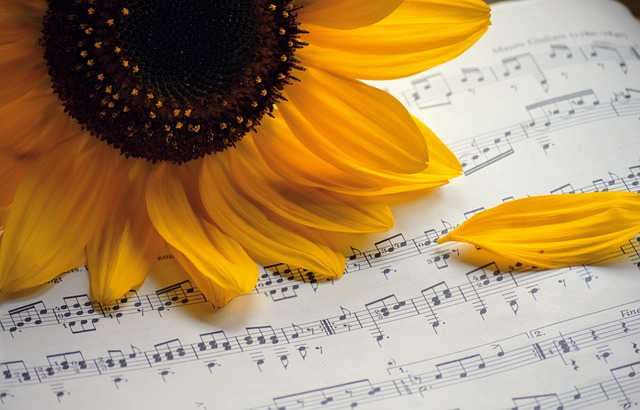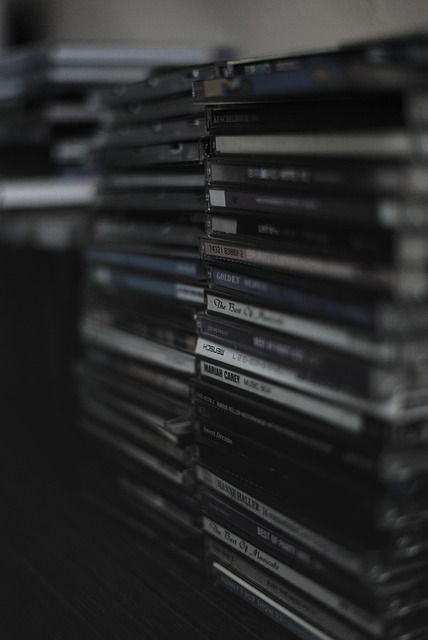Pop music relies on vocal range to evoke emotion and create dynamic melodies. Rhythm, driven by drum beats, sets tempo and captivates audiences. Synthesizers offer boundless creativity in sound design, while guitars provide versatile dynamics and styles. Keyboards lay melodic foundations, and percussion keeps the beat that ignites dance floors. Mastering these elements enhances songcraft and connects with diverse fans globally.
In the realm of pop music, a symphony of sounds come together to create songs that resonate with audiences worldwide. This article explores the essential instruments that drive and enhance the vibrant, bustling pop landscape. From the vocal range that captivates listeners to the rhythmic drum beats that propel songs forward, each instrument plays a crucial role in crafting memorable pop tracks. Discover how synthesizers, guitars, keyboards, percussion, and more contribute to the intricate tapestry of modern pop music.
- Vocal Range: The Powerhouse of Pop Songs
- Drum Beats: Driving the Rhythm in Pop Music
- Synthesizers: Creating Textures and Melodies
- Guitars: Adding Depth and Versatility
- Keyboards: Orchestrating the Pop Sound
- Percussion: Enhancing Dance-worthy Rhythms
Vocal Range: The Powerhouse of Pop Songs

In pop music, vocal range plays a pivotal role in shaping the overall sound and emotional impact of a song. The human voice, with its ability to convey a wide array of emotions, is the backbone of many popular genres. A diverse vocal range allows singers to navigate through different octaves, creating dynamic and captivating melodies that resonate with audiences. This element is particularly crucial in pop songs, where powerful vocals can elevate a track from ordinary to extraordinary.
Understanding vocal range also sheds light on rhythmic patterns and their impact. Different vocal registers align with specific rhythmic structures, adding depth and interest to the music. Adolescents interested in music education can greatly benefit from exploring these ranges, as it fosters a deeper connection with the art form. Whether it’s achieving high notes that soar above a symphony orchestra structure or grounding a song with rich bass tones, mastering vocal range is an essential aspect of pop music craftsmanship. Visit us at music appreciation: understanding dynamics anytime to explore more about how vocal prowess can transform your musical journey.
Drum Beats: Driving the Rhythm in Pop Music

Drum beats are the heartbeat of any song, and their significance is no less in pop music. These rhythmic patterns, often created using drums or drum machines, play a pivotal role in setting the tempo and driving the energy of a pop tune. In the fast-paced world of pop culture’s influence on music trends, drum beats serve as the foundation that keeps listeners engaged. The science behind music and memory tells us that these repetitive yet captivating rhythms are highly memorable, making them essential for creating hooks that stay with audiences long after the song has ended.
Whether it’s a simple four-on-the-floor beat or a more complex syncopated pattern, drum programming is an art in its own right. With music production software reviews highlighting various tools designed to aid in creating and customizing these beats, modern producers have endless possibilities at their fingertips. So, if you’re looking to craft your next pop hit, give us a call at Musical Notation and Reading Skills – we can help you turn your creative vision into a rhythmic reality that’ll have everyone dancing along.
Synthesizers: Creating Textures and Melodies

Synthesizers play an integral role in shaping the soundscapes of modern pop music, offering producers and artists an array of creative possibilities. These instruments transcend traditional boundaries, allowing musicians to craft complex textures and intricate melodies that can elevate a song from ordinary to extraordinary. With their versatility, synthesizers can mimic the sounds of orchestras or create entirely new, futuristic tones, reflecting the ever-evolving nature of pop music and its cultural diversity reflected in musical styles.
The digital age has further revolutionized synthesizer usage, with advancements in technology enabling artists to access an extensive library of sounds and effects. This accessibility has democratized music production, allowing aspiring musicians to experiment and create without the need for extensive training in musical notation and reading skills. Digital music distribution and streaming platforms have also contributed to the popularity of synthesizers, giving artists a global audience and fostering a community that thrives on pushing musical boundaries. Consider reaching out to us at music as a tool for social change to explore how these instruments can be harnessed for creative expression and positive impact.
Guitars: Adding Depth and Versatility

Guitars are an indispensable element in pop music, offering both depth and versatility that can elevate any song. Their ability to provide both melodic lines and rhythmic accompaniment makes them a cornerstone of countless hits across various genres. In many pop songs, guitars serve as the backbone for creating dynamic textures, from soft, introspective passages to high-energy riffs that drive the chorus. Understanding dynamics, or how music shifts between soft and loud moments, is crucial in appreciating how guitars contribute to these changes, often subtly but significantly, throughout a track.
Moreover, guitars play a pivotal role in shaping the overall sound of pop music by enabling musicians to experiment with different styles and moods. Whether it’s strumming an acoustic for a heartfelt ballad or shredding electric for a upbeat dance number, guitarists offer a vast palette of tones to express the song’s emotions. For those interested in exploring these dynamics further, visiting us at music industry career paths anytime can provide valuable insights into how guitars fit within the broader symphony orchestra structure and functions—a contrast that highlights their unique role in modern concert hall experiences as well as contemporary pop productions.
Keyboards: Orchestrating the Pop Sound

In the world of pop music, keyboards play a pivotal role in orchestrating that signature sound. These versatile instruments are instrumental in crafting the melodic and harmonic structures that define countless hit songs. From lively synth lines to atmospheric pads, they create the very foundation upon which the entire track is built, often serving as the rhythmic heartbeat alongside drums.
Interactive music learning platforms have made it easier than ever for aspiring musicians to unlock their potential on keyboards. By teaching musical notation and reading skills, these tools democratize access to artistic expression through music therapy. Whether it’s a vibrant dance-pop track or a melancholic ballad, skilled keyboardists can breathe life into any genre, giving us a call at modern concert hall experiences to witness their magic firsthand.
Percussion: Enhancing Dance-worthy Rhythms

Percussion plays a vital role in pop music, acting as the heartbeat that drives songs and ignites dance floors. From steady beats to intricate rhythms, it adds an essential layer of energy and groove that captivates audiences. Drums, cymbals, and other percussion instruments create the foundation upon which melodies and harmonies can flourish. A well-crafted drum pattern can elevate a pop song from merely pleasant to exhilaratingly danceable.
In today’s music landscape, where songs often blend various genres, percussion remains a universal language understood by listeners worldwide. It transcends cultural boundaries, connecting people through its primal rhythms. Moreover, understanding and appreciating the psychology of musical preferences reveals how percussion can evoke powerful emotions and create an immersive experience for fans. Visit us at Sound Engineering Basics for recording anytime to delve into these aspects further and explore how music, as a tool for social change, can be amplified through the strategic use of percussion.
In the realm of pop music, a harmonious blend of diverse instruments comes together to create captivating songs. As this article has explored, vocal range sets the emotional tone, while drum beats provide the energetic pulse that drives a pop tune. Synthesizers and guitars offer dynamic textures and melodies, keyboards orchestrate the overall sound, and percussion adds that extra spark to make a dance-worthy rhythm. By understanding these essential instruments, musicians can craft and produce songs that resonate with folks in today’s digital era.








Leave a Reply